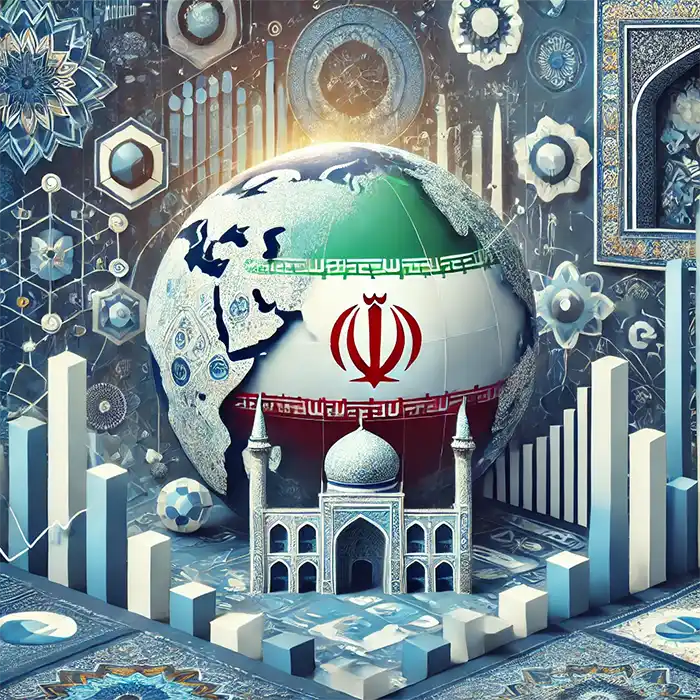Iran Market Entry Strategies: Tips for International Companies

Entering a new market is always challenging, but Iran presents unique opportunities and obstacles that require careful consideration. Iran’s market, with its 80 million-strong population, is rich in potential, particularly in sectors like energy, automotive, pharmaceuticals, and consumer goods. However, entering this market requires a deep understanding of its economic environment, legal constraints, and cultural dynamics. This article aims to provide practical insights into effective Iran market entry strategies for international companies.
Understanding the Iranian Market Landscape
1. Economic Overview
Iran’s economy is diverse, with a significant focus on the oil and gas sector, which accounts for a substantial portion of its GDP. However, sanctions have led to the development of various other sectors, including manufacturing, agriculture, and services. The Iranian government has been promoting domestic production through initiatives like “Resistance Economy,” which encourages self-sufficiency and reduces dependency on imports. Understanding these economic dynamics is crucial for companies looking to enter the market, as they dictate the demand and competition landscape.
2. Regulatory and Legal Framework
Navigating Iran’s regulatory environment is one of the most significant challenges for international businesses. Sanctions, particularly those imposed by the United States, have created a complex legal landscape. It is essential to stay informed about the latest developments in international sanctions and how they impact business operations in Iran. Moreover, Iran’s legal system is based on Islamic law, which influences business practices, contracts, and dispute resolution. Working with local legal experts is recommended to ensure compliance and mitigate risks.
-
Top Digital Marketing Agencies in Tehran, Iran: 2026 Expert GuideDecember 19, 2025
3. Cultural Nuances and Business Etiquette
Iranian business culture is relationship-oriented. Building trust and long-term relationships is essential for successful market entry. Decision-making processes may take longer due to the emphasis on building personal connections. Additionally, understanding local customs, such as the significance of “taarof” (a form of polite humility), can help in navigating business negotiations. Companies should also be aware of the cultural importance of religion, particularly during the holy month of Ramadan, when business hours and productivity may vary.
Key Market Entry Strategies
1. Joint Ventures and Partnerships
Given the complexities of entering the Iranian market, forming joint ventures or partnerships with local companies is often the most effective strategy. Local partners bring valuable insights into the market, assist with navigating regulatory hurdles, and help build relationships with key stakeholders. Additionally, the Iranian government has been promoting foreign investment in specific sectors through incentives, but these are often more accessible when working with local partners.
2. Localized Product Offering
Iranian consumers have specific preferences that may differ significantly from Western markets. Localization of products and services is critical to meeting local demand. This could involve adapting product features, pricing strategies, or marketing approaches to align with local tastes and purchasing power. For instance, in the food and beverage sector, products need to comply with Islamic dietary laws (halal certification). Understanding these local requirements and preferences can significantly enhance market acceptance.
3. Leveraging Digital Marketing and E-Commerce
Despite the sanctions and some internet restrictions, Iran has a highly active online community, with a significant portion of the population using social media platforms like Instagram and Telegram. Leveraging digital marketing can be a powerful tool for reaching Iranian consumers, particularly the younger demographic, which is tech-savvy and engaged. E-commerce is also growing rapidly, offering an alternative entry point for international brands, especially in the fashion, electronics, and cosmetics sectors.
4. Navigating Sanctions and Financial Transactions
One of the biggest challenges in doing business with Iran is navigating the financial restrictions imposed by international sanctions. Traditional banking channels are often unavailable, requiring companies to find alternative methods for transactions. Some businesses use barter systems or engage in trade through third countries. It is crucial to work with financial experts who understand the intricacies of sanctions and can help structure deals that comply with both local and international regulations.
Practical Considerations for Market Entry
1. Conducting Market Research
Before entering the Iranian market, thorough market research is essential. This includes understanding the competitive landscape, consumer behavior, and potential barriers to entry. Iran’s market can be opaque due to limited availability of reliable data, so partnering with local research firms or consultants who have on-the-ground knowledge can provide valuable insights.
2. Understanding Local Supply Chains
Supply chain management in Iran can be complex due to infrastructure challenges and sanctions. Companies need to carefully plan their logistics, considering factors like transportation networks, warehousing, and customs procedures. Working with local logistics providers who understand the nuances of the Iranian market can help mitigate these challenges.
3. Human Resources and Talent Acquisition
Iran has a well-educated workforce, particularly in fields like engineering, technology, and medicine. However, finding and retaining top talent can be competitive. Companies should focus on creating an attractive work environment that aligns with local cultural values, offering competitive salaries, benefits, and career development opportunities. It is also important to be aware of local labor laws and employment regulations.

4. Adapting to Economic Volatility
Iran’s economy has been subject to significant volatility, influenced by factors like international sanctions, oil price fluctuations, and domestic policy changes. Companies entering the market need to be prepared for these uncertainties and develop flexible business models that can adapt to changing economic conditions. This might involve scenario planning, diversifying investments, or implementing hedging strategies to mitigate risks.
Opportunities and Challenges Ahead
1. Opportunities in Emerging Sectors
While traditional sectors like oil and gas remain important, there are growing opportunities in emerging sectors such as renewable energy, pharmaceuticals, and technology. The Iranian government is actively seeking foreign investment in these areas to diversify the economy and reduce dependence on oil revenues. Companies that can offer innovative solutions or technologies that address local needs are likely to find significant opportunities.
2. Challenges of Compliance and Risk Management
Compliance with international sanctions and local regulations remains a major challenge for companies operating in Iran. Businesses need to invest in robust compliance programs and stay informed about the latest legal developments. Additionally, risk management strategies, such as political risk insurance, can provide a safety net against potential losses due to unforeseen events.
3. Navigating Political and Social Dynamics
Iran’s political and social landscape is complex and can impact business operations. Companies need to stay informed about local political developments and understand how they might influence market conditions. Engaging with local stakeholders, including government officials, industry associations, and community leaders, can help in navigating these dynamics and building a positive business presence.
Iran Market Entry Strategies Conclusion
Entering the Iranian market presents both significant opportunities and challenges for international companies. Success in this market requires a deep understanding of the local economic, legal, and cultural environment, as well as the ability to navigate complex regulatory and financial landscapes. By adopting a strategic approach, leveraging local partnerships, and staying informed about market developments, companies can effectively tap into the potential of this emerging market.
Whether through joint ventures, localized offerings, or digital marketing strategies, companies that are willing to invest the time and resources to understand Iran’s unique market dynamics are likely to find rewarding opportunities. However, it is essential to approach this market with caution, thorough research, and a long-term perspective to navigate the challenges and achieve sustainable success.
Reade more:








